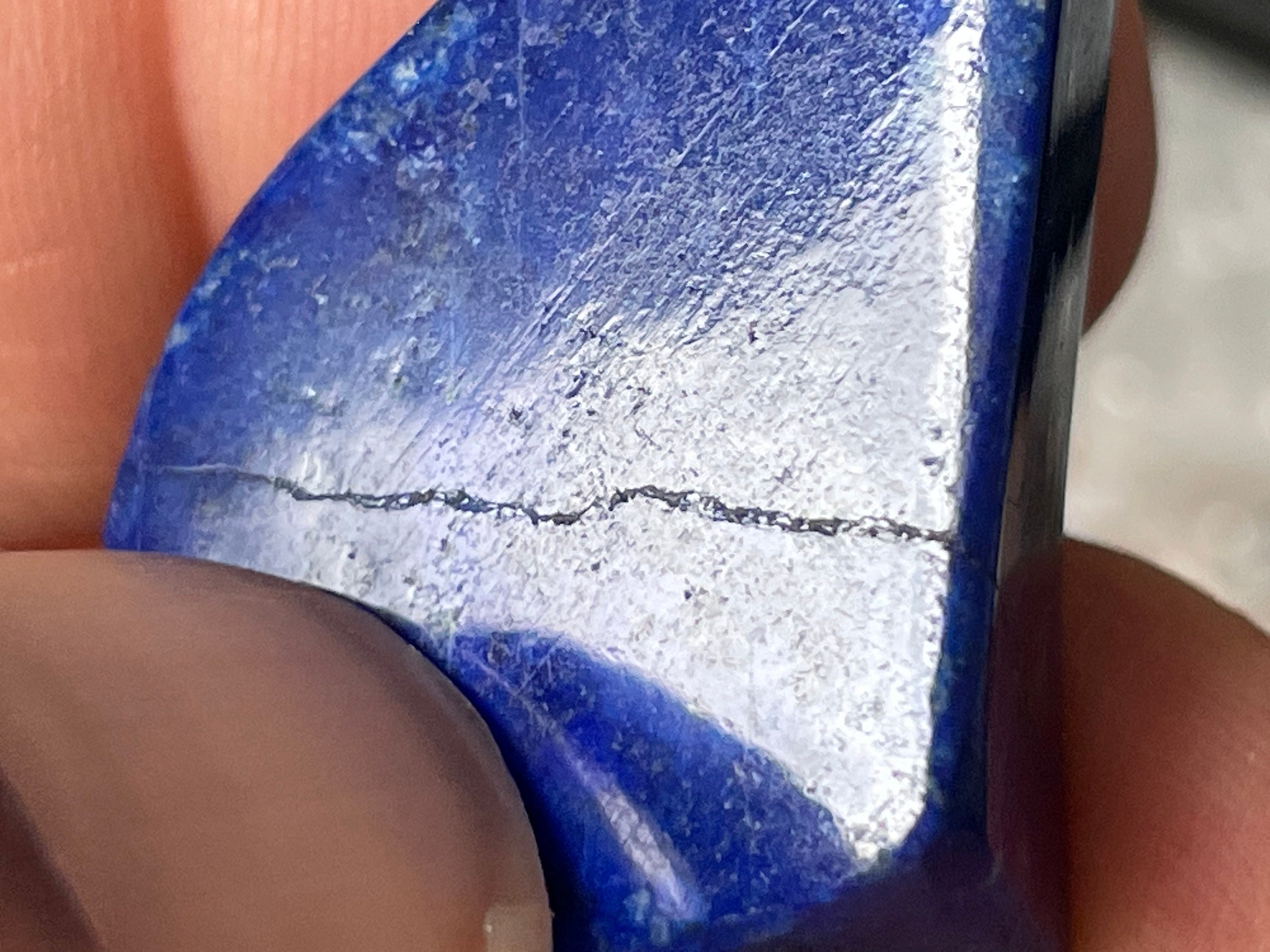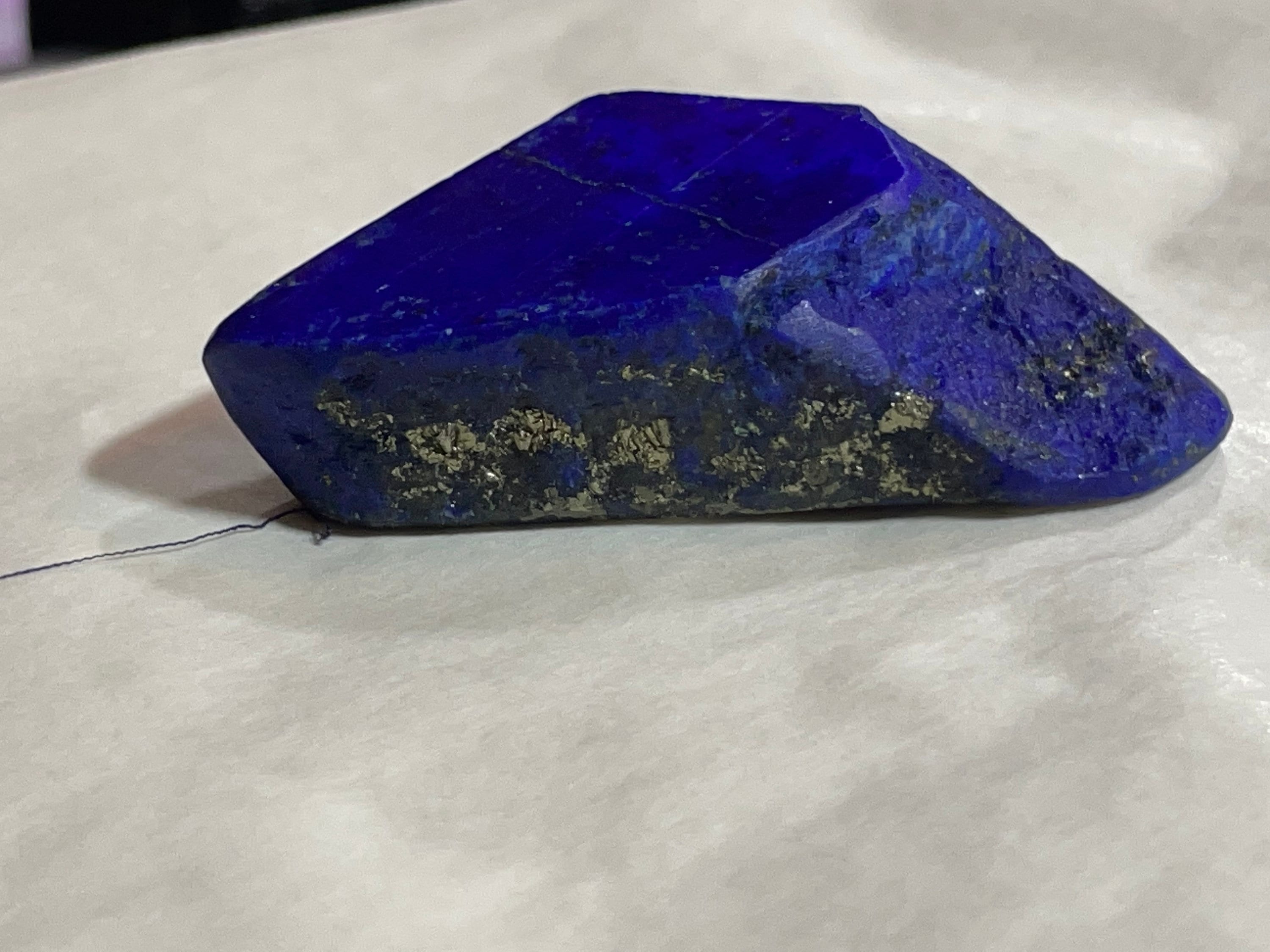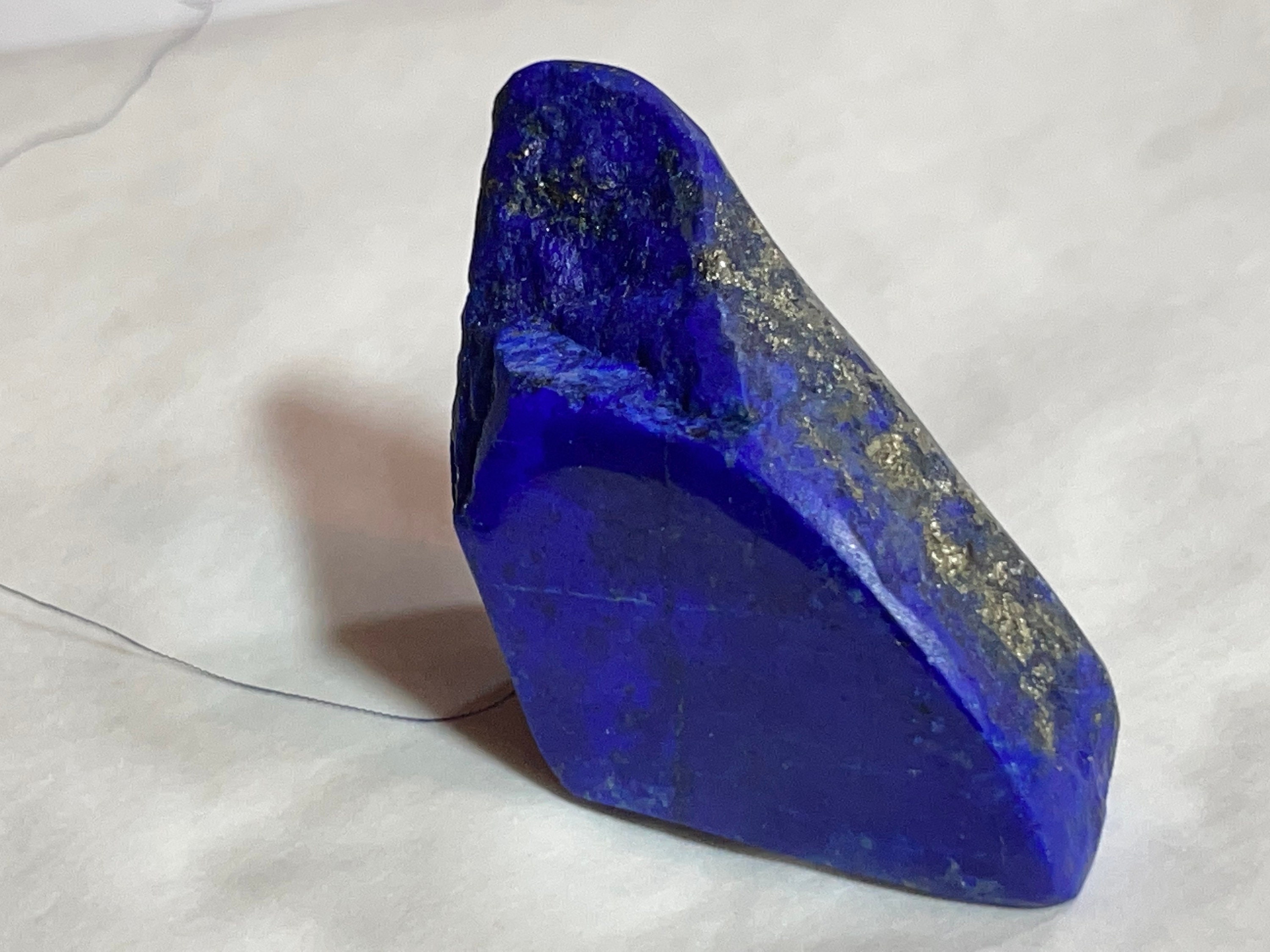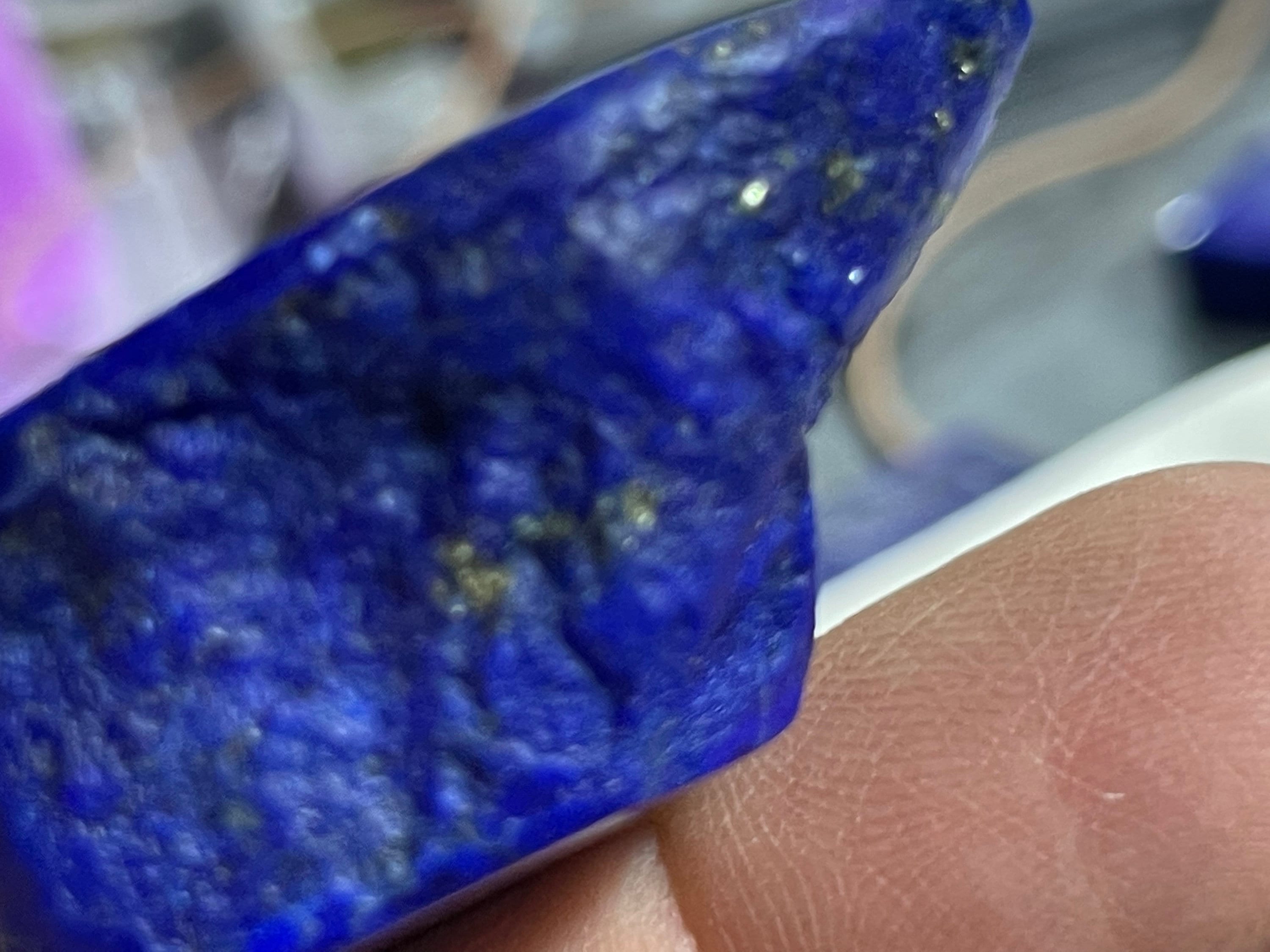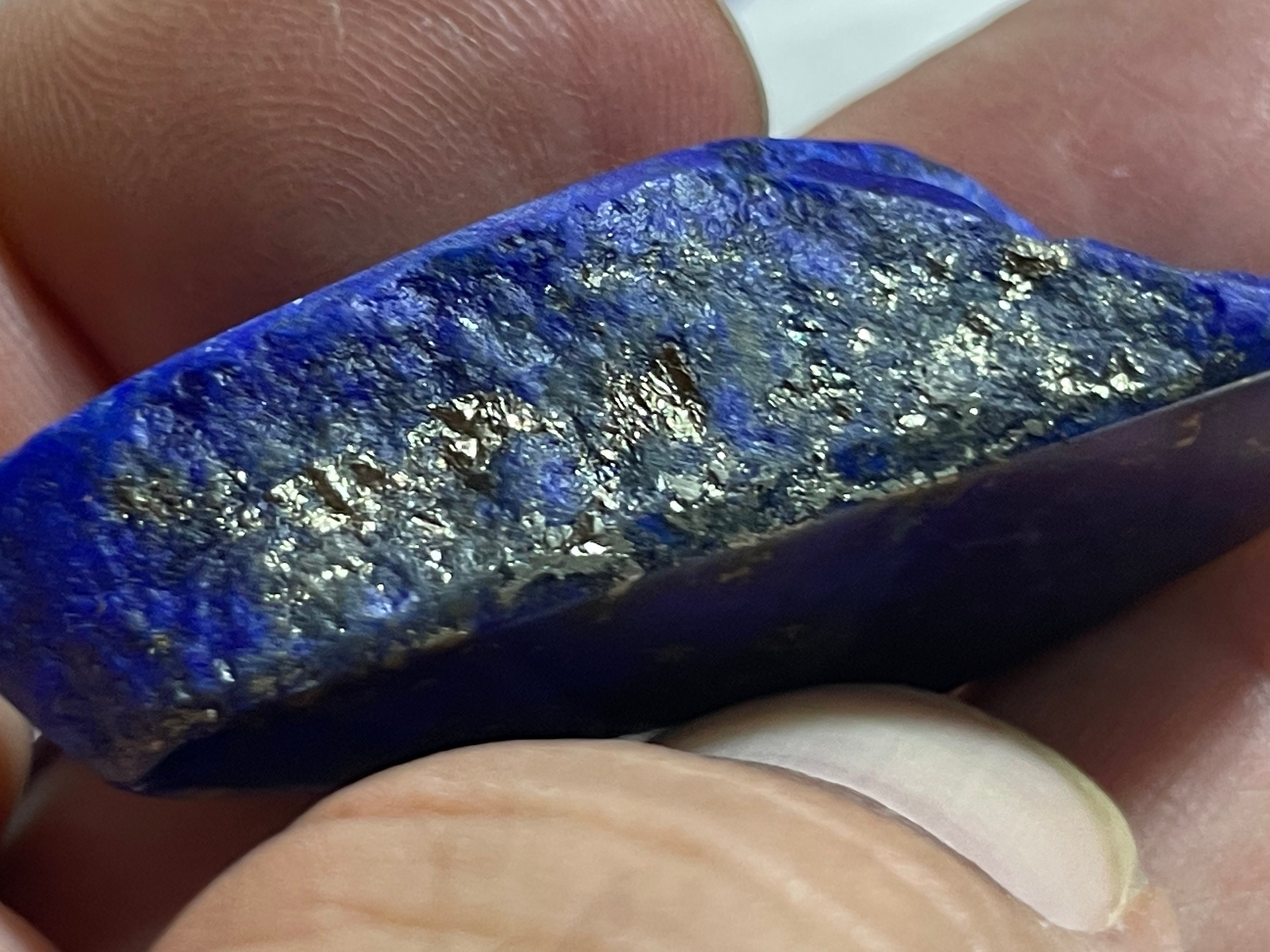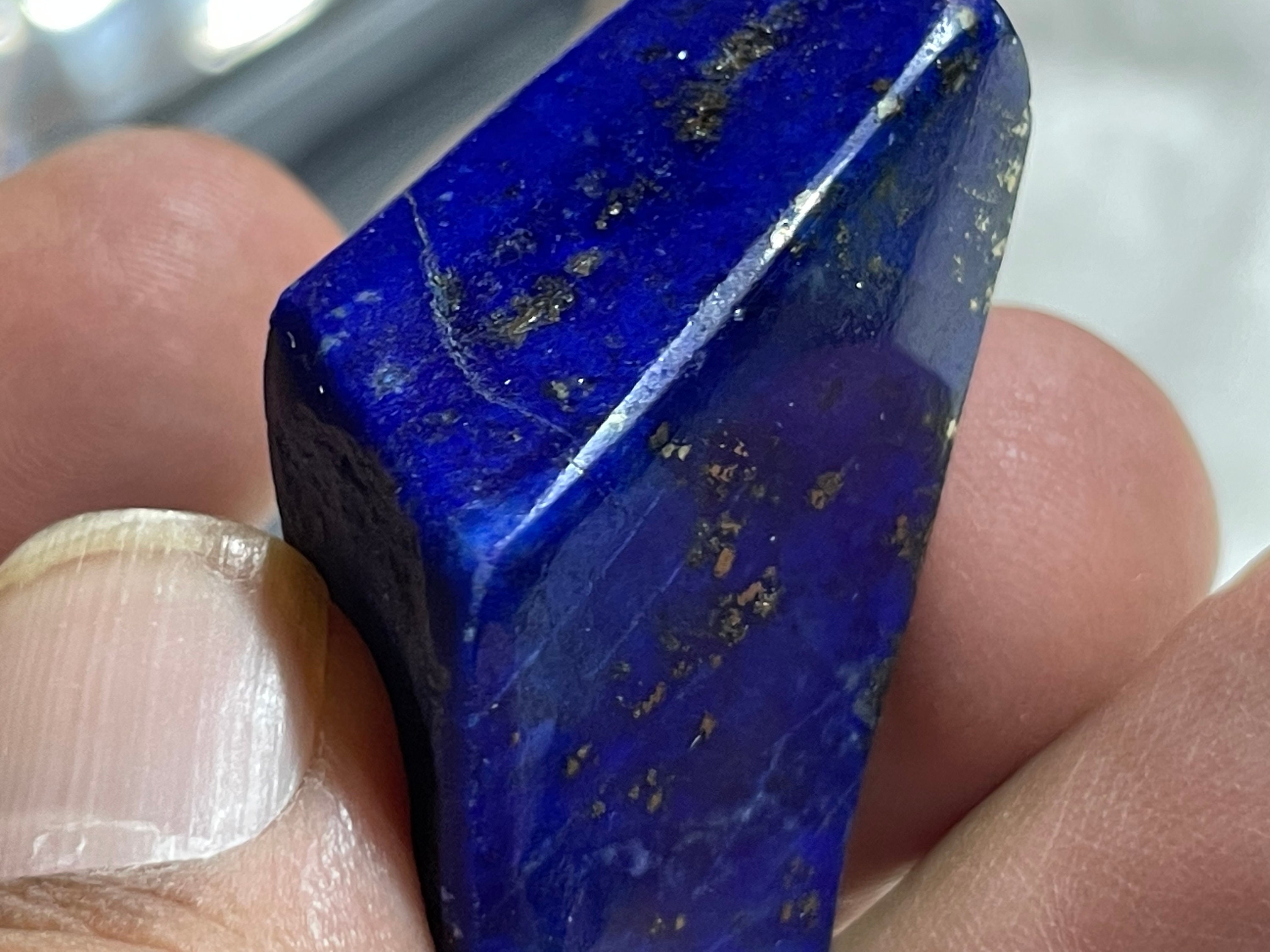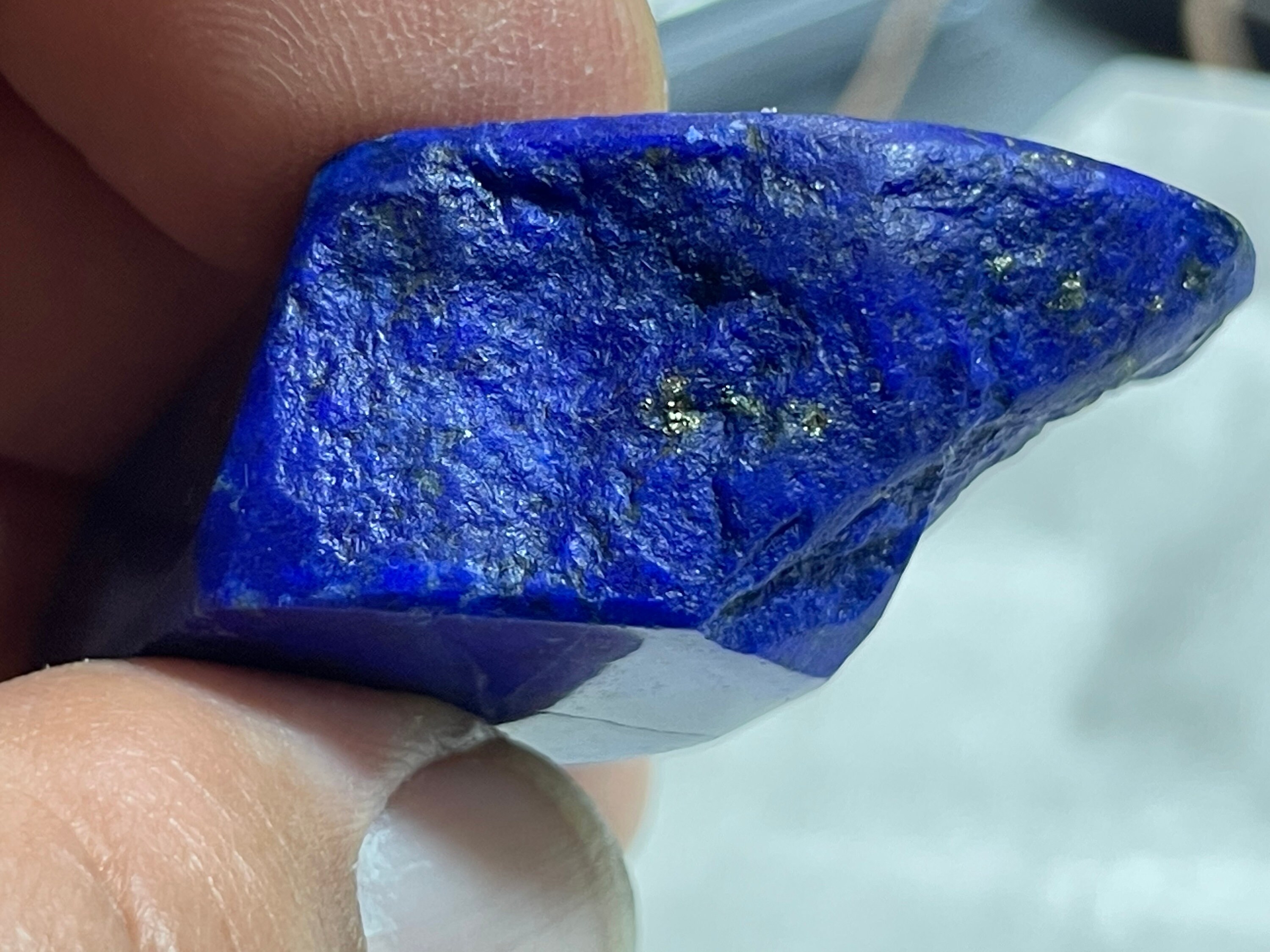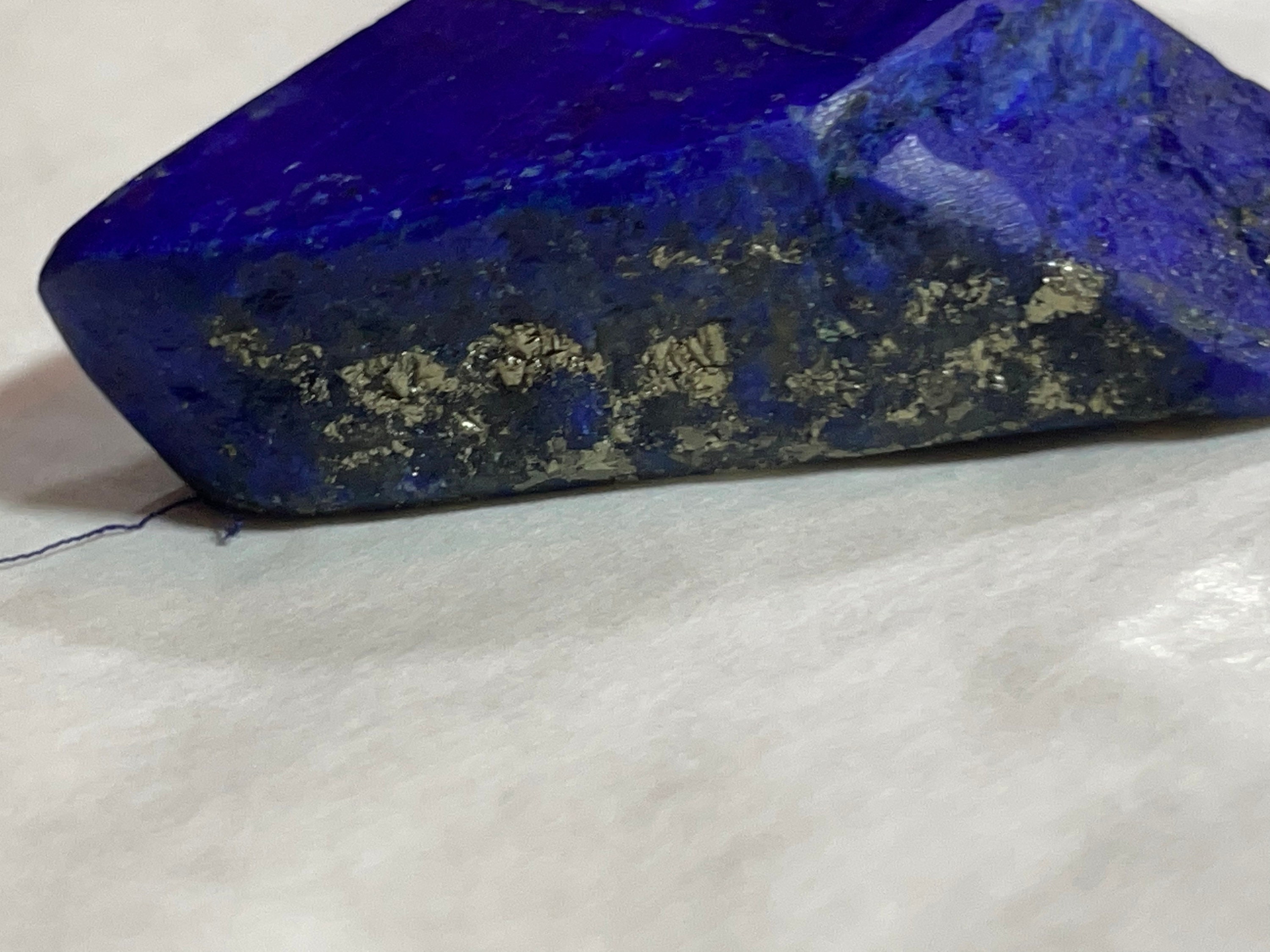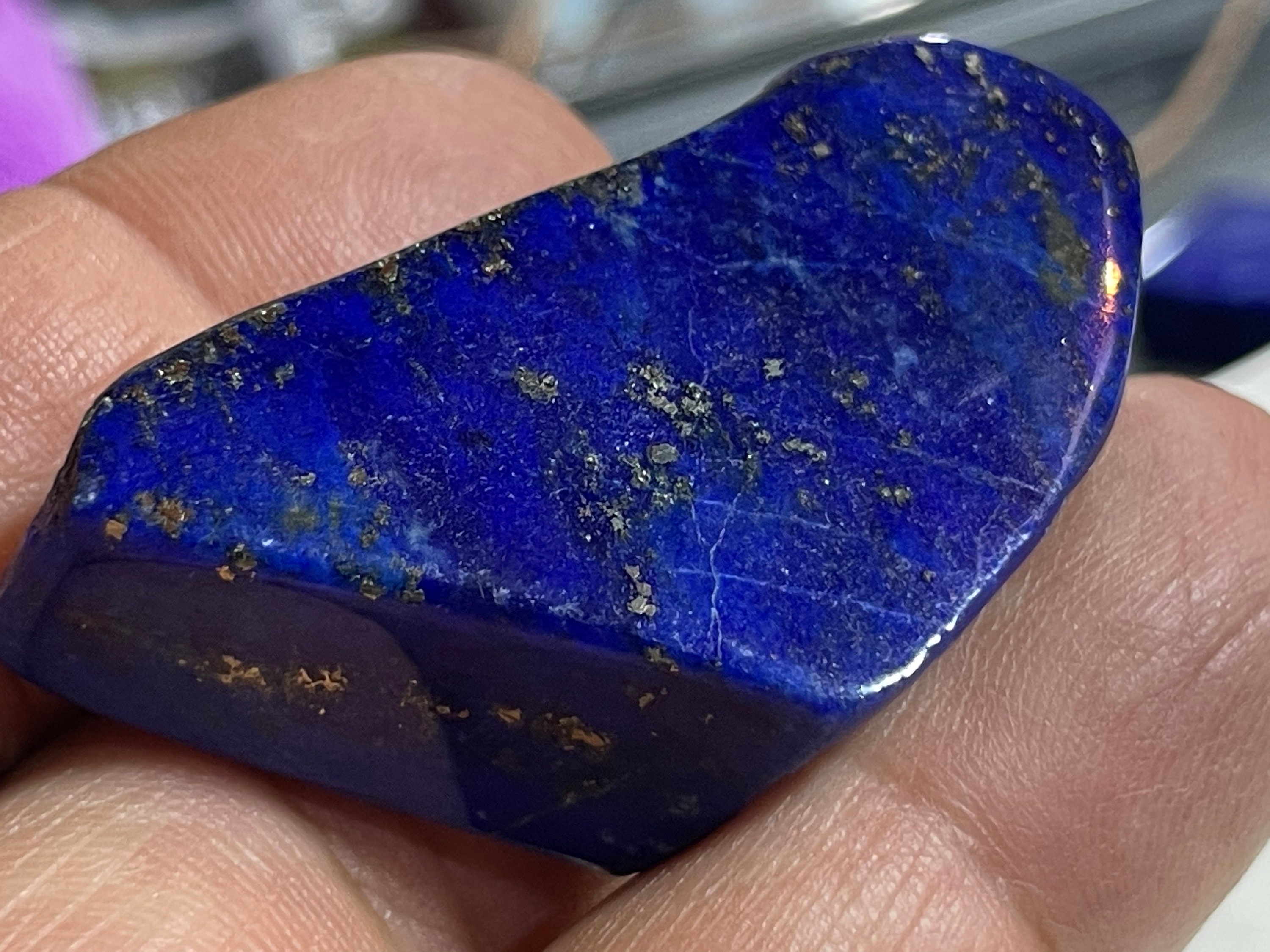Beautiful Lapislazuli handmade Pendant
Real Lapislazuli Pendant in Sterling silver 925 Sterling
A lot of knowledge about the stone of the pharaohs and kings, the lapis lazuli
Lapis lazuli pendant set in silver
The name lapis lazuli is made up of the Persian word azul = blue and the Latin word lapis = stone. Lapis lazuli is one of the oldest gemstones used.
It has been known for about 6500 years. I've been dealing with this mysterious blue stone for about 25 years. In the meantime, many of these blue treasures have passed through my hands and made enthusiastic enthusiasts breathe a sigh of relief.
It's just a "blue" ...
Well, not if you look closer. On the one hand you discover in it the depths of the oceans "Atlantic Ocean" and on the other hand the sky or the galaxy, represented by the pyrite, the gold shining celestial stars.
But stop! That is not all!
If you look deeper into this fantastic gemstone, you will even discover the image of the earth from the moon's point of view. I think an astronaut would be more than happy to confirm that.
But is it just a gem for astronauts and physicists?
It is also the stone of the pharaohs and kings but not only. Times have changed, when back then, in antiquity, it was downright revered by the rulers of Egypt and was considered a status symbol.
It was dedicated as a funerary gift to the wealthy people of the society of that time.
Lucky beetles, so-called scarabs, were made. Cleopatra, the then great ruler, used lapis lazuli pigments to further accentuate her feline eyes. She loved the lapis lazuli and turquoise dearly.
The great general Napoleon had this protective stone with him as Scarabaeus and noted in his notes that it was thanks to him that he was not seriously injured.
Kaiser Wilhelm also owned a lapis lazuli. People said the blue gemstone was divine strength, security and infinite love.
Therefore it was an important protective stone for the Greeks, Romans and the Indians, among others.
What is the lapis lazuli made of? It is a tertiary, deep blue methamorphic rock. It consists of about 7 different minerals: lazurite (blue), pyrite (gold), diopside, sodalite, hauyn, ankerite and hematite. Where does the lapis lazuli come from? Find areas exist in Chile, Canada, Russia, Burma, California, California and especially in Afghanistan.
There are very beautiful deposits in Afghanistan. Lapis lazuli has been mined in mines in the Afghan province of Badakshan for over 6000 years.
Effects of lapis lazuli on the body It is said to have special healing effects. It reduces deposits in the blood vessels, which also reduces the risk of strokes or heart attacks.
It ensures a comfortable sleep and restful nights. When you put the stone under the pillow, your head becomes free for inspiration. Over the course of history, the lapis lazuli has become the stone of friendship and truth. It helps the owner to make clear decisions. Its deep blue has a cooling and calming effect.
The stone proves to be a valuable help with concentration and learning problems as it penetrates deep into the interior. It has an antispasmodic effect on neuralgia and lowers high blood pressure. The lapis lazuli is also said to have a special effect on the psyche.
Because it not only promotes intuition and strengthens the self-confidence of shy people, but even outright choleric people calm down faster under the beneficial influence of lapis lazuli. It is also said that it balances sadness and melancholy, releases inner blockages and has a particularly invigorating effect on our ability to concentrate. If it is placed on the throat and forehead chakra, it should relax and promote meditation. This is where it works most strongly, the 3rd eye chakra. The story People have always believed in the power of the stone and also called it the sky stone. He should bring peace, wisdom and love.
Other cultures revered the gemstone as a friendship stone that boosts self-confidence, promotes interpersonal relationships, and helps maintain real friendships.
The mining of lapis lazuli goes back a long way to antiquity. Lapis lazuli has been mined in mines in the Afghan province of Badakshan for over 6,000 years. In ancient Egypt, lapis lazuli was a popular stone for amulets and ornaments such as scarab. In other cultures, lapis lazuli was considered a sacred stone. In the Middle East, it was considered a magic stone.
When Alexander the Great brought him to Europe, signet rings and figures were made from it. Many palaces and churches (chapel of Padua) were decorated with the lapis lazuli or their pigments. Cappadocia cave painting is a legacy from ancient times.
The color was called "ultramarine", which interpreted means "from beyond the sea". Well, it is a blue gemstone, one might say. In earlier times, the lapis pigments were more expensive than gold. The stone is still today Still very valuable. The most expensive blue of all time! And what an incredible blue! The value of this stone for the world of art is immeasurable, because the ultramarine of the old masters is nothing more than real lapis lazuli. The marble-like gemstone is ground into powder and stirred up together with binding agents to produce bright blue watercolors, tempera or oil paints.
Before 1834, when it was not possible to produce this color synthetically, the only available ultramarine was the valuable substance made from real lapis lazuli, which we now notice in many works of art. For example, many pictures of the Madonna were created with this color. The color was called ultramarine. Which means "From beyond the sea high".
It was also very expensive. It was even, for a time, traded more dearly than gold. But in contrast to all other blue pigments, which tend to pale in the light, it has not lost any of its radiance to this day. Nowadays, the blue pigment extracted from lapis lazuli is mainly used in restoration work and by collectors of historical paints.
At that time, however, ultramarine blue was not only valuable but so intense that it overshadowed all other colors.
